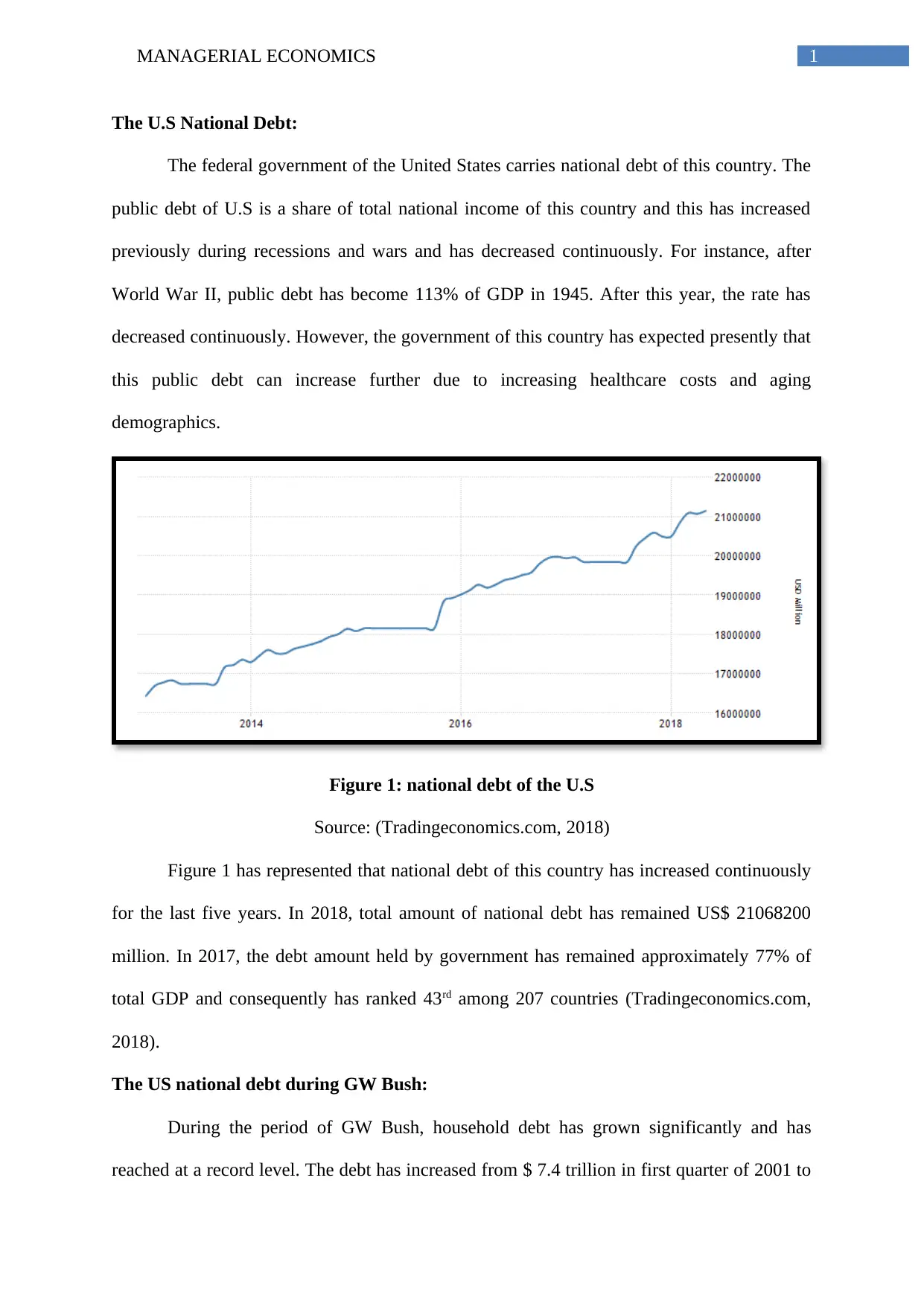Managerial Economics: Examining the Fluctuations in U.S. National Debt
VerifiedAdded on 2023/06/10
|4
|779
|173
Essay
AI Summary
This essay provides an analysis of the U.S. national debt from a managerial economics perspective, examining its fluctuations under different presidential administrations, including G.W. Bush, Obama, and Trump. It highlights the significant increase in national debt during the Bush and Obama administrations due to factors such as the global financial crisis and increased government spending. The essay also touches upon Trump's initial strategies to reduce the national debt by increasing tax revenues and cutting federal expenditure. The analysis refers to economic viewpoints supporting debt-financed government spending during recession periods to mitigate adverse economic effects. The document is available on Desklib, a platform offering study tools and solved assignments for students.
1 out of 4











![[object Object]](/_next/static/media/star-bottom.7253800d.svg)